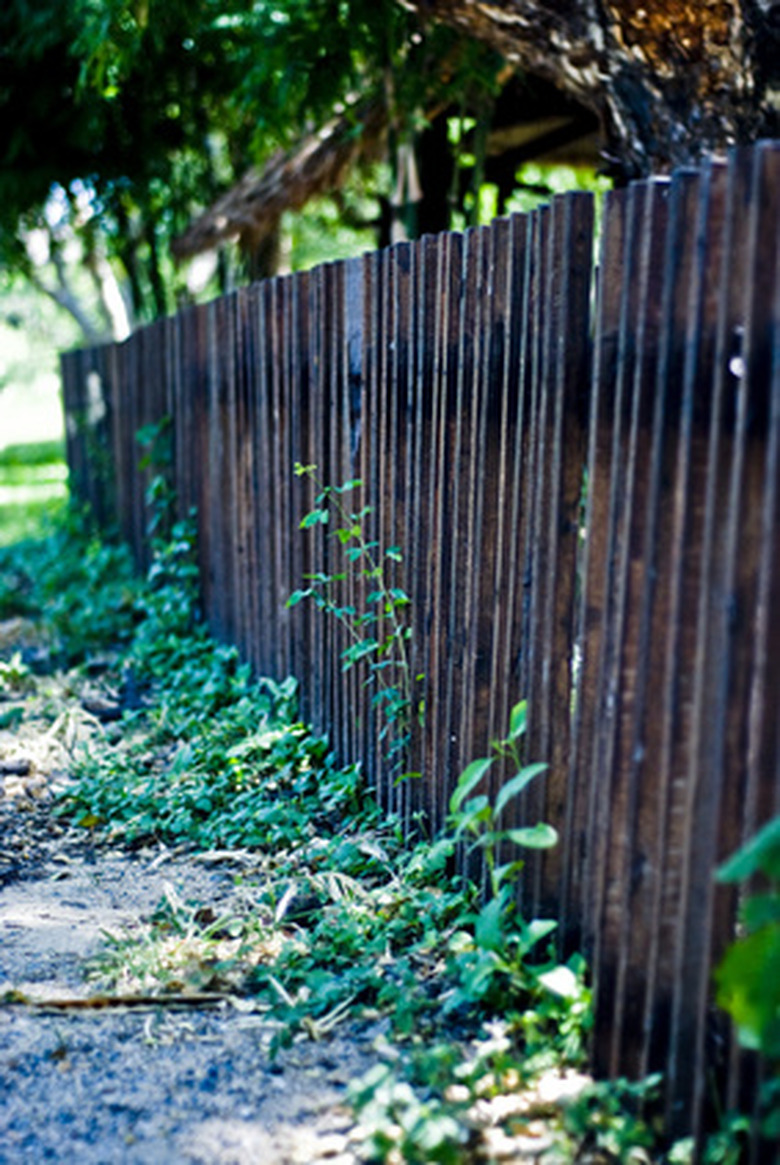How Do You Tell Who Owns A Fence?
The poet Robert Frost's admonition that "good fences make good neighbors" is true to a certain extent, but the neighborly peace may be disrupted by a dispute over who actually owns the fence. Conflicts often erupt when it comes time to repair or replace the fence, or when new construction or new ownership takes place. Finding out who owns the fence may take some time but is not a difficult process.
Survey
Step 1
Get a survey. Particularly if the property is newer, the county may have a recent survey on file. If not, call a licensed land surveyor to get a property survey done. Be sure to ask about costs since the survey can cost several hundred dollars or more.
Step 2
Outline the property after the survey. The surveyor will leave a 24-inch steel pin at the corners of the property. Tie a string between the poles to create a line down the length of the property. As an alternative, shoot a laser line between the poles.
Step 3
Determine on whose property the fence lies. If the fence lies in unoccupied space between the two properties or is directly on a shared property line, it is called a division or border fence, discussed in the next section.
Division or Border Fences
Step 1
Determine ownership by occupancy if the fence lies between or directly on the property line. Whoever uses the land up to the fence is considered the owner. If you have grass and mow the area directly up against the fence but your neighbor allows the weeds to grow on his/her side, then you own the fence by occupancy.
Step 2
Determine ownership by joining with other structures. If you can't determine ownership by occupancy, examine what buildings or other fences are attached to the fence in question. The fence becomes the property of the person whose structures it is attached to.
Step 3
Determine ownership by means of enclosure. If the previous two methods don't establish ownership, look to see how the fence in question encloses the properties. If it creates the complete enclosure of your land but not your neighbor's, then you are the owner.
